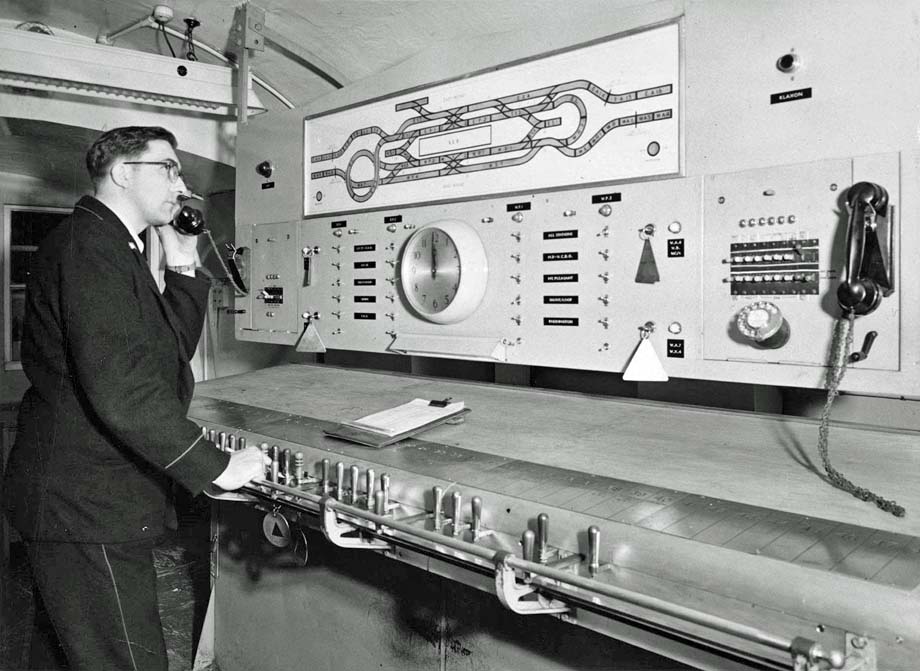Deep under the streets of the capital, multiple disused railway tunnels stretch for six miles end to end.
After being shut for a decade, there are now plans to reopen the London Post Office Railway, known to many as Mail Rail, as a tourist ride.
In a chilly central London railway depot, it feels as though Mail Rail's workers suddenly upped and left and time has since stood still.
Thick dust has settled on discarded orange overalls, safety cones, an abandoned kettle, and a musty smell lingers.
Hefty 1920s giant levered mechanical equipment sits incongruously next to 1980s jumbo walkie-talkies, while industrial pipes and strips of peeling paint hang from the ceiling.
Loose cables wind up the walls alongside a 1989 safety bulletin notice, while an 1959 Ordnance Survey map of Holborn sits rolled up on a desk.
Locker doors have been left half open with used shower gel bottles and dirty towels hanging inside.
Mail Rail was approved by an Act of Parliament a century ago, and during its heyday its driverless trains carried 12 million postal items daily on the line stretching from East End's Whitechapel to west London's Paddington.
But it was mothballed a decade ago.
You leave the depot and descend in a lift to the Mount Pleasant platform.
You enter what feels a lot like a normal Tube platform, but the tunnels at each end are smaller, reducing to 7 feet in diameter.
A tiny train sits on the track, one of 70 stored on the network, but this one has been specially adapted for passengers.
A dozen small seats are squeezed into the carriage.
Once inside, a plastic shutter is secured over your head, and it feels like you are about to embark on a rollercoaster ride.
The train sets off and you notice every bump as it rumbles into the tunnel and hear the brakes screech as it winds around tight corners.
You get within inches of the filthy tunnel walls and limescale stalactites hanging from the roof.
Tourists may be able to experience the thrill of this in the not-too-distant future.
Proposals submitted to Islington Council would see visitors board trains at Mount Pleasant and ride a section of the tunnels.
But the team behind the project still needs to raise £2 million from sponsors by March to secure further Heritage Lottery funding.
One person rather familiar with the railway is Ray Middlesworth, who has worked as an engineer in the tunnels for 27 years.
"It's the holy grail for underground explorers, a hidden part of the rail network," he says.
"Some people called it the Post Office's best-kept secret."
After the line closed in 2003, he stayed on in a small group of engineers whose job it was to preserve the network.
"It's like having a giant train set," he says.
"I used to have a train set when I was a boy so I've upgraded a bit."
In its prime, 220 people worked on the line, which runs beneath Oxford Street in central London, at one point within a few feet of the Bakerloo Line.
"They said, once a railwayman, always a railwayman," Mr. Middlesworth says proudly recalling the railway's past.
"There was a real family feel, with lots of fathers and sons working among teams."
His tasks were varied and included working behind scenes for the Christmas party.
"There was a Santa's Grotto and we'd invite kids from a care home along to ride on the trains," says Mr. Middlesworth.
Mail Rail's raison d'etre is proof that congestion is certainly not a new problem in the capital.
"A century ago, in the days of predominantly horse-drawn vehicles, congestion was causing delays to the movement of mail," says Chris Taft from the British Postal Museum and Archive.
A report looking at the case for building the railway concluded London's traffic speeds would never surpass 6 mph, convincing MPs to approve plans to build the railway, which could run at 40 mph.
The line was completed in time for the 1927 Christmas parcel post, and "it became the world's only electric underground railway dedicated to moving mail," says Mr. Taft.
Mail Rail ran throughout the 20th Century, carrying four million letters 22 hours a day during the 1980s.
The tunnels also doubled as a film set for the Bruce Willis action flick, Hudson Hawk.
Scenes were shot in a Mail Rail depot mocked up to be fictional Vatican secret railway Poste Vaticane.
But by the 1990s, Royal Mail built a new hub in Willesden, west London, and by 2003, only three of eight Mail Rail stations still worked.
That year, Royal Mail said the line cost five times as much as using roads and the network shut down.
"Closing it was a shame," says Mr. Middlesworth.
"But closure became inevitable."
However, he is enthusiastic about plans to open the railway to tourists.
"It would be a shame if it passed into history unmarked," says Mr. Middlesworth.
"This will move it on in a unique form."
Islington Council is expected to make a decision on proposals next month, and if approved, the attraction would fully open by 2020.
Andy Dangerfield.
(likely no image with original article)
(usually because it's been seen before)
provisions in Section 29 of the
Canadian Copyright Modernization Act.


